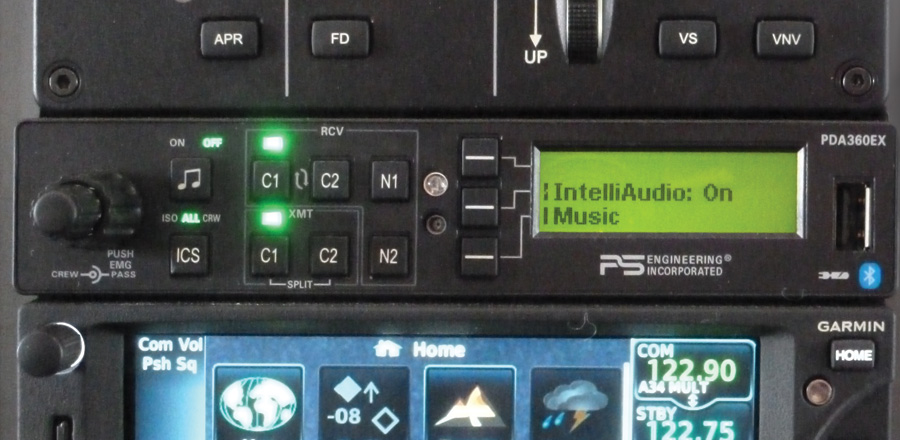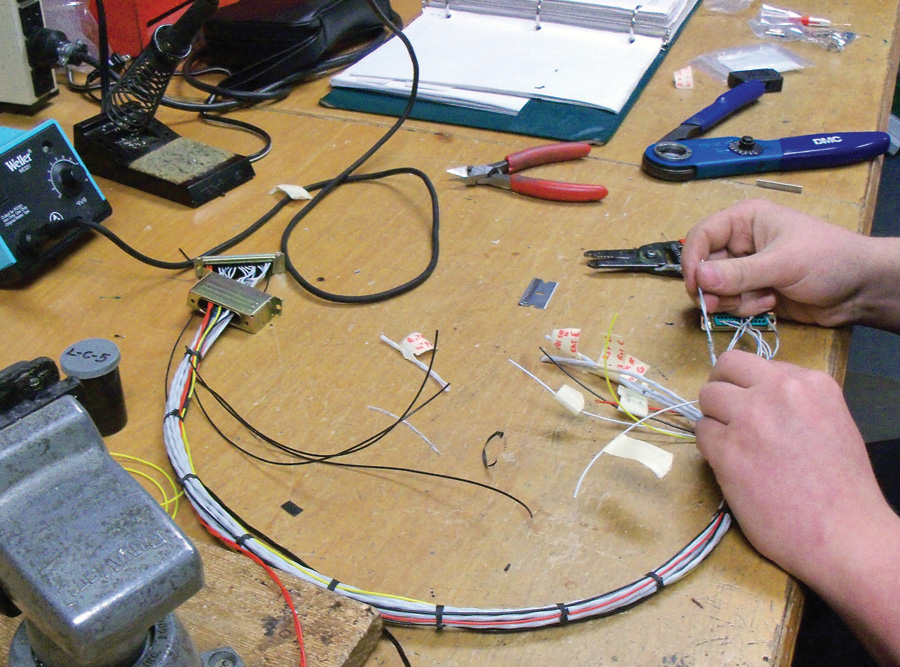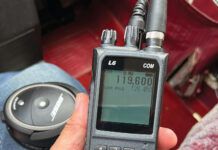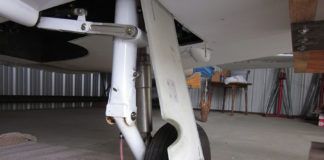It’s a thankless system, but the audio control panel is the lifeline between your cockpit and the outside world. Since it supports a variety of other avionics on and off the instrument panel, you should design your avionics suite around it. But in a modern world of integrated intercom, aural warning systems, digital Bluetooth connectivity, three-dimensional sound, and entertainment audio distribution, selecting (and wiring) an audio panel isn’t as easy as it once was.
When I designed my first avionics suite for a Lancair IV in the early 1990s, the choices were easy. King had just released the KMA24, Collins had the AMR350, and Narco sold the CP136 audio switching panels. You pretty much matched the audio panel to the brand of radios because most panels did the same basic thing—switched the audio between headphones and speaker and selected one of two radios for transmit and receive. This was even before the day of integrated intercom— cabin communications were handled with a standalone unit, requiring more panel space.
Today, there are only two major players in non-certified aircraft audio systems—a dominant and cutting-edge PS Engineering—and Garmin. Leveraging technology already in place on their certified audio panels, both companies market non-TSOd models specifically for the Experimental/kit and LSA market. The buying decision is mostly feature-driven (Bluetooth interface being the major one), so in this article I’ll scan the market of Experimental audio panels, look briefly at FAA-certified models, and run down their major features.
Garmin GMA 240
Garmin’s non-certified stereo audio panel is the $850 GMA 240, which borrows some functions and ergonomics from the early-gen certified GMA 340 and current GMA 350-series. Measuring 1.30 by 6.29 by 7.12 inches and weighing 24 ounces including the mounting rack and connectors, the GMA 240 sports a simple control set. The GMA 240 accommodates two com radios (and two nav receivers) and has a four-position intercom, which can also be wired for two seats in two-place cabins.
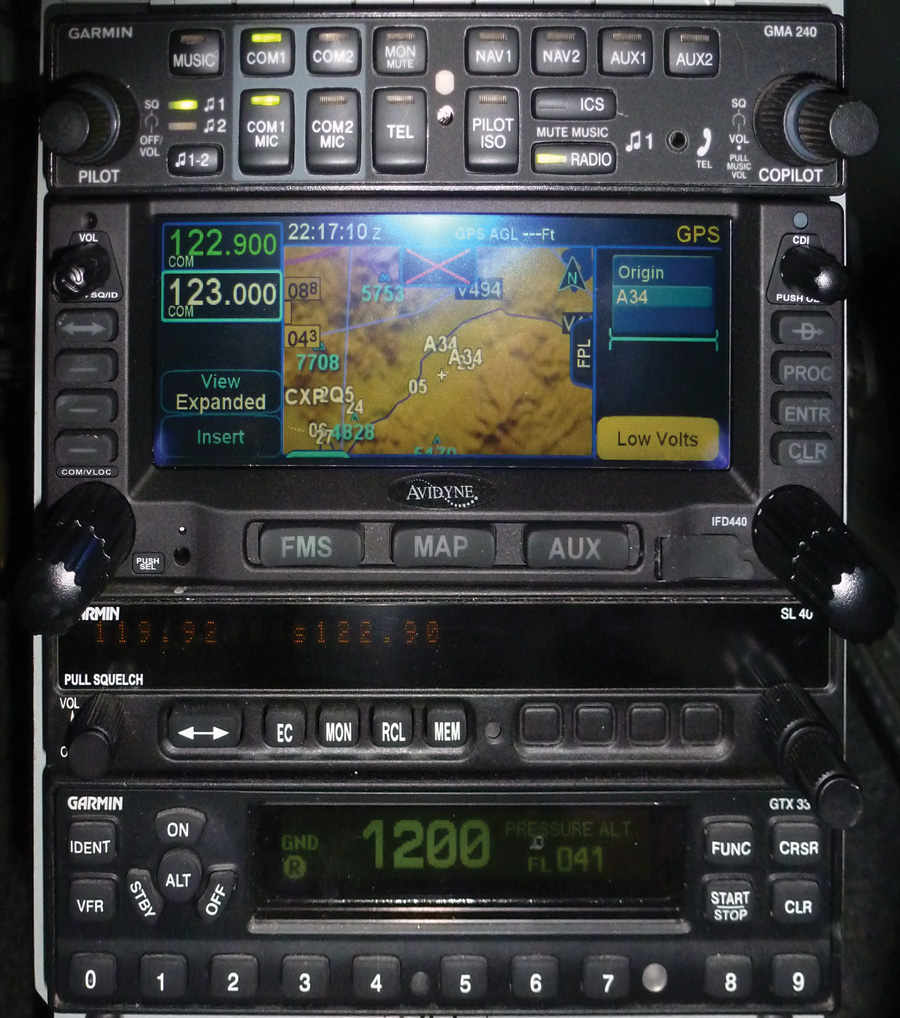
Garmin’s GMA 240 audio panel (top) doesn’t have integrated wireless Bluetooth, but it’s easily compatible with Avidyne’s new slide-in IFD-series navigator (center).
LED-illuminated push buttons (which have a positive, high-quality feel) control the main functions, while rotary knobs on the left and right side of the bezel control pilot, copilot, and passenger volume, and squelch threshold. The pilot’s rotary knob serves double duty as a power control, or the unit can be switched on and off with an avionics master switch. In the event of an electrical system failure, a fail-safe circuit connects the pilot’s headset and microphone directly to the primary com radio, while an audio warning advises that power is interrupted or that the unit was powered off.
Garmin has a function called Master Avionics Squelch, or MASQ, which is internal processing circuitry, helping to reduce ambient noise inherent with the VHF radio inputs. MASQ isn’t a substitute for the panels’ adjustable squelch control, but instead is always working in the background to reduce noise. As expected, each microphone on the intercom has a dedicated VOX (voice activation) circuit to ensure only the active microphone is heard with an open squelch. Also as you would expect from a modern panel, the intercom provides two modes of isolation, Pilot (for privacy) and All (where everyone is on the intercom), controlled by pressing the Pilot ISO key.
But there isn’t a standard crew isolation mode to separate the back seats from the front unless it’s configured with additional wiring. But in doing that, crew isolation also eliminates the pilot isolation function. Some other features, including gain levels, are enabled with internal jumpers and potentiometers.
The GMA 240 provides for two wired stereo entertainment inputs—controlled with the Music1 and Music2 push-button switch. A 1/8-inch music jack is also located on the GMA 240 front bezel. The input jack can accept music player or compatible telephone sources, allowing you to have a phone conversation in full duplex. The system has a Master Music bezel key for selecting and deselecting music input, the ICS bezel key enables automatic music muting during intercom activity, and a Radio bezel key mutes the music during radio reception.
The GMA 240 accommodates three unswitched audio inputs, which have configurable volume level. These can be used for traffic and terrain system, engine monitor, landing gear advisory, and other attention-getting audio alerts.
Speaking of muting, one feature I’m fond of is Monitor Mute. Controlled with a dedicated bezel key, it mutes the audio from a secondary receiver when the primary receives incoming audio. In the real world, you might be listening to an ATIS broadcast on the secondary com radio, but receive a radio call on the primary. Monitor Mute can work as a backstop for not missing a call.
If you’re looking for Bluetooth functionality, you won’t find it on the GMA 240. You’ll need to buy Garmin’s $2,300 flagship and FAA-certified GMA 350c. It has Garmin’s Telligence voice recognition system for commanding the panel with voice commands. For example, key the push-to-talk switch and say “Com 1,” and the audio panel automatically toggles Com 1 as the active transmitter, eliminating the need to reach up and hit the button on the bezel. There are over 100 recognized voice commands to choose from.
The GMA 350c also has 3D audio, which uses digital audio processing to locate the inputs to the headset. Think of it as audio spatial dimension, or the processing of the audio more closely to how the human ear naturally responds to directional audio sources. It’s an electronic illusion, really, with the panel artificially delivering audio sources as if they were coming from a unique location in the cabin or specific seat position.
For instance, envision monitoring multiple audio sources—perhaps Com 1 and Com 2—while also listening to passenger intercom chatter coming from the back seats. With 3D processing, Com radio 1 will seem to come from the front left and Com 2 will come from the right, coinciding the way both com radios are separated in the radio stack or on the instrument panel, in many configurations. Intercom audio is also separated relative to where each individual sits. By default, the system assumes the pilot is in the left seat and the copilot is in the right. Only have a single com radio? Its audio will be processed so it’s heard in the 12 o’clock position.
If you have Garmin’s latest VIRB X-series action camera, the GMA 350c will wirelessly connect to it for piping in intercom and com audio over the video recording. With this configuration, there is no more dealing with awkward cables and impedance mismatches with external camera inputs.
I’m surprised Garmin hasn’t added at least some of these advanced features to its non-certified GMA 240, particularly the Bluetooth interface. Buyers looking to ditch patch cables associated with wired telephone and music input might look to PS Engineering’s Bluetooth model. Let’s take a look.
PS Engineering
The two Experimental/LSA-category audio panels in PS Engineering’s lineup—PDA360EX and PMA5000EX—trickle down from the company’s certified systems, notably the PMA450 and PM8000-series. Without the high cost of FAA certification (which of course is passed along in certified products), the EX-series have many of the same features of PS Engineering’s flagship panels, but with additional capabilities that cater to the kit market.
These panels still bring PS Engineering’s proven IntelliVox intercom with SoftMute function. This means there is no manual squelch adjustment. Instead, microprocessors take care of opening and closing the squelch by differentiating cabin noise and human voice. It works flawlessly in just about every cabin we’ve tried over the years.
PDA360EX
The $1,995 PDA360EX is a descendent of PS Engineering’s flagship PMA450—which is equipped with PS Engineering’s IntelliAudio technology. Licensed from the U.S. Air Force, IntelliAudio helps present the audio sources in a way that’s more intuitive to process, or at least in a way that mimics how the human ear hears and registers sound (similar to what Garmin does with its 3D Audio function). Air Force pilots know this technology as multi-talker.
IntelliAudio places Com 1 and Com 2 audio in various positions within the stereo headset, making simultaneous incoming radio signals sound as if they are coming from different locations. For example, the user can place the signal sources in nine unique positions. The intent is to make it easier for the pilot to concentrate on the radio of choice while ignoring the radio of lesser importance at the time. For example, the pilot can choose to pay attention to ATC while ignoring an ATIS broadcast, depending upon what is pertinent at the moment.
PS Engineering attempts to simplify the user interface with an LCD bezel display, while retaining traditional push buttons and a rotary volume knob for radio switching and basic intercom settings. The display is especially useful for configuring the IntelliAudio dimensional sound through the Head Related Transfer (HRT) function. This is essentially a graphic showing where the sound is positioned relative to your head. You can turn the IntelliAudio off and listen to the audio in a traditional manner through the IntelliAudio soft key on the display. The setup is refreshingly intuitive, in my opinion.
Once in the IntelliAudio mode, repeated pressing of the Com 1 or Com 2 line select keys moves a corresponding half-circle cursor to the locations relative to the listener graphic that’s on the display. Press “Done” to exit and save the configuration, where it’s recalled at every system power up.
A com radio monitoring mode takes the interface one step further by allowing the secondary radio audio to be muted by the primary radio (or the one being used for transmissions) when there’s activity. This essentially automates my cat-and-mouse process of cranking the volume down when listening to ATIS on the second radio whenever a call comes in on the primary.
PS Engineering has always taken entertainment and telephone input to a higher level, and the PDA360EX is no exception with its integrated Bluetooth transceiver. The feature set includes an onscreen Bluetooth telephone control, plus a bezel-mounted USB port, which can be used for charging. It provides 5 VDC and 1.5 amps of current, which can effectively charge most smartphones and tablets. When the phone rings, an incoming call menu opens, showing caller ID. Simply answer the call by pressing the top line select soft key on the display.
Initial Bluetooth pairing is easy to do—simply look for the PDA360EX in the list of discoverable devices in your smartphone or tablet and then type in the default 0000 access code. The panel can be paired with up to eight individual devices, but only one music source can be streaming at one time.
I evaluated the PDA360EX (and the other panels in this roundup) with Bose’s latest A20 ANR headset and enjoyed flawless high-fidelity music quality—arguably the best I’ve heard from any aircraft audio system. But what’s missing is a music volume control on the bezel. To adjust entertainment volume, you need to access the command from the onscreen menu. Not a huge deal, but dedicated hard keys sure would be more convenient, just as it is on the PMA5000EX—a panel not equipped with Bluetooth. More on that system in a minute.
The music input function has three modes. In the “All” mode, music will mute with either intercom or when there is radio activity. In “Karaoke” mode, the music only mutes during outgoing radio transmissions, and in “Radio” mode it will mute whenever the com radio breaks squelch. A dedicated bezel-mounted music On/Off button is handy for quickly stifling the music.
The PDA360EX is equipped with an internal readback recorder, which captures up to 45 seconds of audio. Recording is automatic, and both the pilot and copilot can hear the playback.
The PDA360EX, measuring 1.30 by 6.25 by 7.15 inches and weighing 1.5 pounds, is plug-and-play with Garmin’s GMA 240. Other than price, it’s worth noting that the PDA360EX differs slightly from the PMA450 in that it has a four-seat intercom (instead of six in the PMA450), it doesn’t have marker beacon functions, it can’t support a cabin speaker, and it has no public addressing capability.
PMA5000EX
The PMA5000EX is much like the company’s certified PMA8000B audio panel. It’s a direct slide-in replacement for Garmin’s GMA 240 and GMA 340 audio panels and has a four-seat intercom, unlike the six-place capability in the PMA8000B. Also unlike the 8000B, the 5000EX doesn’t have marker beacons, cabin speaker output, and it doesn’t have a digital readback recorder.
But as mentioned earlier, what I really like about the PMA5000EX is the ability to adjust music input volume from the front panel. Simple “Up” and “Down” volume keys serve as a master gain control, while the entertainment volume can be tweaked on the music device. The 5000EX incorporates the SoftMute function described above and can accommodate two music inputs, including the 2.5-mm bezel-mounted input jack. It can accommodate cell phone input, music input, and an advisory audio input. You’ll need to purchase PS Engineering’s 2.55-mm adapter patch cable to connect these devices. There are a variety to choose from, based on the model of your phone.
While the 5000EX has four unswitched inputs, it also has two auxiliary switched inputs (these are controlled with dedicated bezel keys), which have a convenient muting function. Simply press and hold the key of the input source you want to mute for two seconds, and it stifles the warning audio for 60 seconds and then returns to normal alerting mode. This might be useful for muting traffic alerts in high-density traffic areas and terrain warnings when flying low, for example.
At $1,095, the PMA5000EX is $800 less than the certified PMA8000B, while the PDA360EX is $400 less than the certified PMA450. The EX-series comes with a one-year warranty, which is two years less than the warranty on certified panels. Additionally—and this is important—PS Engineering doesn’t offer a warranty on these products unless they are wired by an authorized PS Engineering dealer. See the sidebar on page 22 for reasons why.
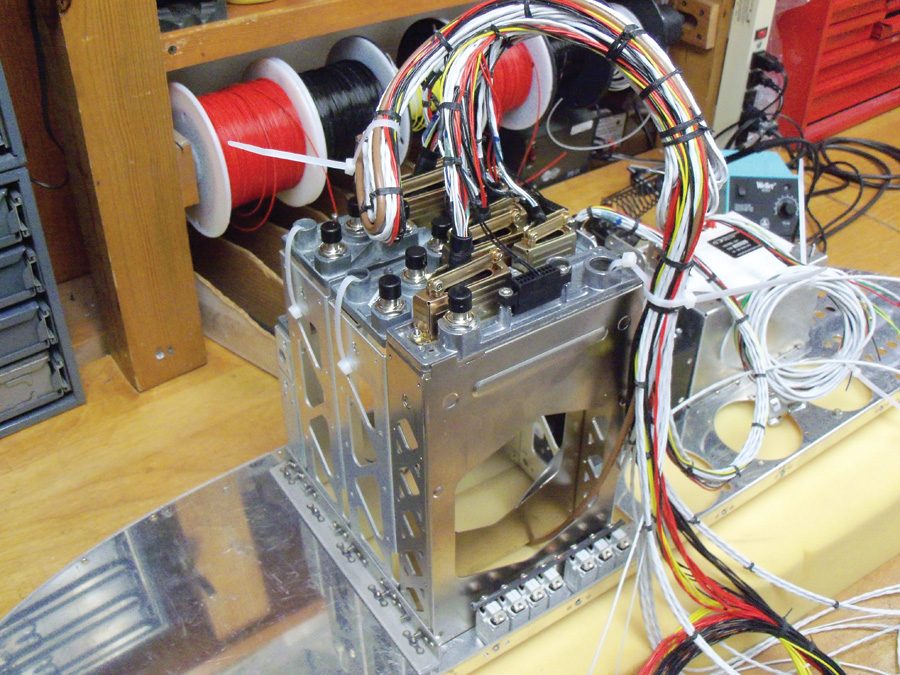
The performance of the audio panel is only as good as the quality of wiring. Consider having a professional avionics shop wire the entire radio stack, along with the audio.
Top Pick
If I had to pick a favorite panel among the non-TSO models appropriate for Experimental and LSA application, it would have to be the PS Engineering PDA360EX. I like the simplicity of configuring the IntelliAudio dimensional sound, which is made simpler with the LCD display.
I also like the PDA360EX Bluetooth functionality. While the wired entertainment input sounded exceptionally well with all of the panels, who needs to deal with patch cables in a cramped cockpit? Wireless Bluetooth is here to stay, and the PDA360EX delivers it and more at a price that’s fair and competitive. The money you save on an FAA-certified panel could be put toward a professionally made harness.

![]()
Larry Anglisano is the Editor in Chief of sister publication Aviation Consumer. He’s an avionics technician with FAA Repairman certificate and an active pilot.





